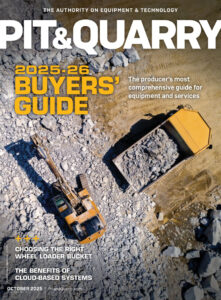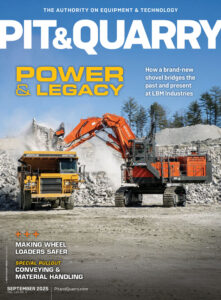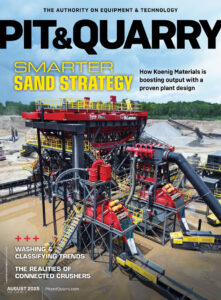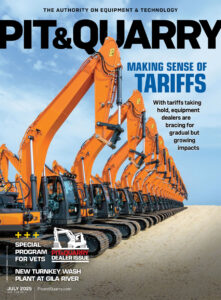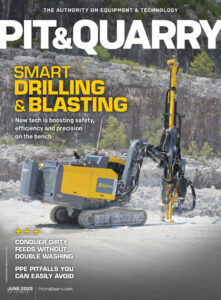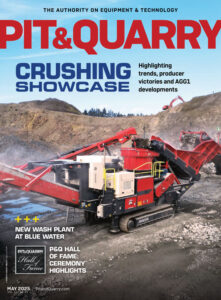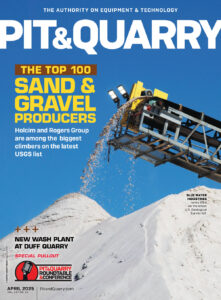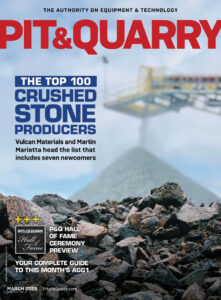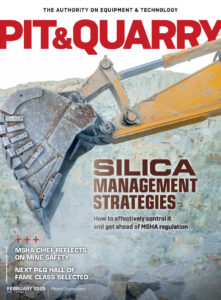SCOTT ALEXANDER (SUMMIT MATERIALS): There’s fantastic technology for our industry out there and available. We’ve invested in a lot of it, but there’s a disconnect between the investment and what leadership management expectations are and what the workforce does.
We can have the best ‘stuff’ available that’s really going to help our uptime, our efficiency and our productivity. But if our workforce doesn’t know how to use it – or the benefits of it – we’ve just wasted a lot of money.
As an industry, we have to develop our people to get them on board. We need the technology developers to help us do that, because that’s going to be the best way for us to move forward.
RAYMOND SLAUGHTER (LUCK STONE): That’s a good segue. I’m taking a slightly different direction, because at Luck Stone, one of our mission statements is to ‘ignite human potential.’
We know we’re going to get good data. We understand we have access to get good data. But it’s only good if people can make decisions off it.
The best decisions are typically made closer to ‘the bottom.’ So, the big thing we’re pushing is smart devices, putting them in every employee’s hand. That gives us the ability to train them on what to use. It puts the decisions where they need to be, and it speeds up reactions to what needs to happen.
ALEX KANARIS (VDG): What we’ve found out is that the most expensive process in the aggregate industry is maintaining equipment. We’re an equipment manufacturer, and we spent the past five to seven years designing a piece of equipment where there’s no need for maintenance. There are no outside bearings – none of that.
Of course, many people choose to monitor vibration, microvibration or temperatures. Temperature is an important one to monitor, but the equipment we manufacture today basically requires zero maintenance. You don’t have to do anything to continue to run.
We have a very good lock on that, and that’s the reason why our aggregate business is increasing.
RYAN MORALES (GULF COAST SAND): One of the things happening in the industry that’s kind of cool now is the technology piece is getting more accessible. Now, smaller independent operators can kind of tiptoe into the space and say: ‘Well, this works.’ Or: ‘This is cool, but I have no idea how to make this effective in my business. Maybe one day it will work.’
Now, it kind of feels like we’re into an evolution where everything funnels into one space. You’re kind of getting all your data relayed in a way that’s much more actionable and intelligent, where you can build and train around that.
Hopefully in doing so, we create a culture of accountability and use that as a learning tool.
RONALDO DOS SANTOS (ANDERSON COLUMBIA): One thing we have done recently is to gather a lot of information on sensors and more cost-effective things like that. Our mindset was to replace the employee for automation, but we then realized there’s a step in between.
Raymond mentioned it, but it goes along the lines of having a device in the hands of the mechanic or repairman so they can be more effective in doing their work. That has really helped us to be more efficient and to minimize the cost.
Another area we’ve been exploring is surveilling systems and cameras. If you can imagine a plant with a couple guys as groundmen, they have a large area to cover. But if you have cameras in strategic locations, they can be more driven to check areas that are important. That’s not new technology, but the technology now is there where you can teach those cameras to give you an alert when something happens that is not usual. There, I think you start to get some efficiency.
DAMIAN MURPHY (PECKHAM INDUSTRIES): When I think about technology on the production side, there’s kind of a floor to cost. There’s only so much you can get out of it, so how much do you invest to get that ‘little bit?’
From an opportunity standpoint, the ceiling is rising on the revenue side with pricing. To me, that’s what we’re looking at. It’s AI and the analytical tools to drive the ceiling. That’s the bigger bang for the buck.
ALEXANDER: This topic reminds me of a recent discussion. I was over with our operational excellence team last week. One of the engineers there and I were talking about this subject. The affordability is a big thing.
They said: ‘We’ve determined in the engineering department that we can buy a compact Chinese vehicle, bolt it to the front of a haul truck, and have more technology at about one-tenth of the cost. I thought it was humorous.
Related: Evolving tech for the aggregate industry (Part 1)

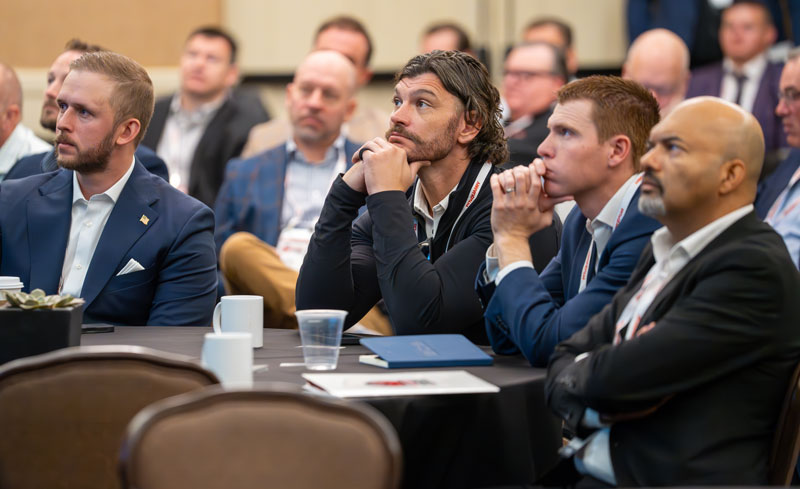
![Says Trux’s Kent Masden: “People are going to start to use [AI] to automate the simple stuff so you can get that off your plate. That’s what we’re all looking for.” Photo: Pit & Quarry](https://stage.pitandquarry.com/wp-content/uploads/2025/04/PQ0425S_equipmentandtechnology-kentmasdenFEATURE.jpg)

